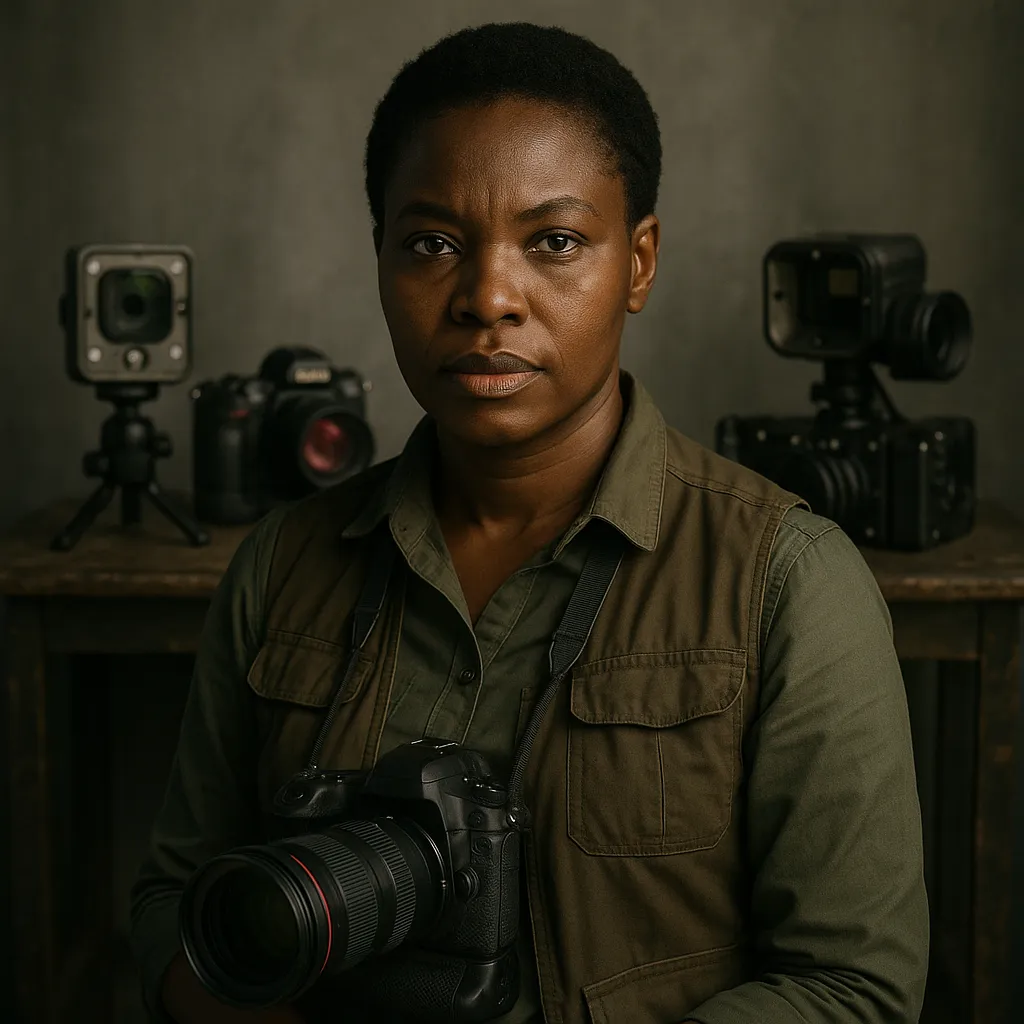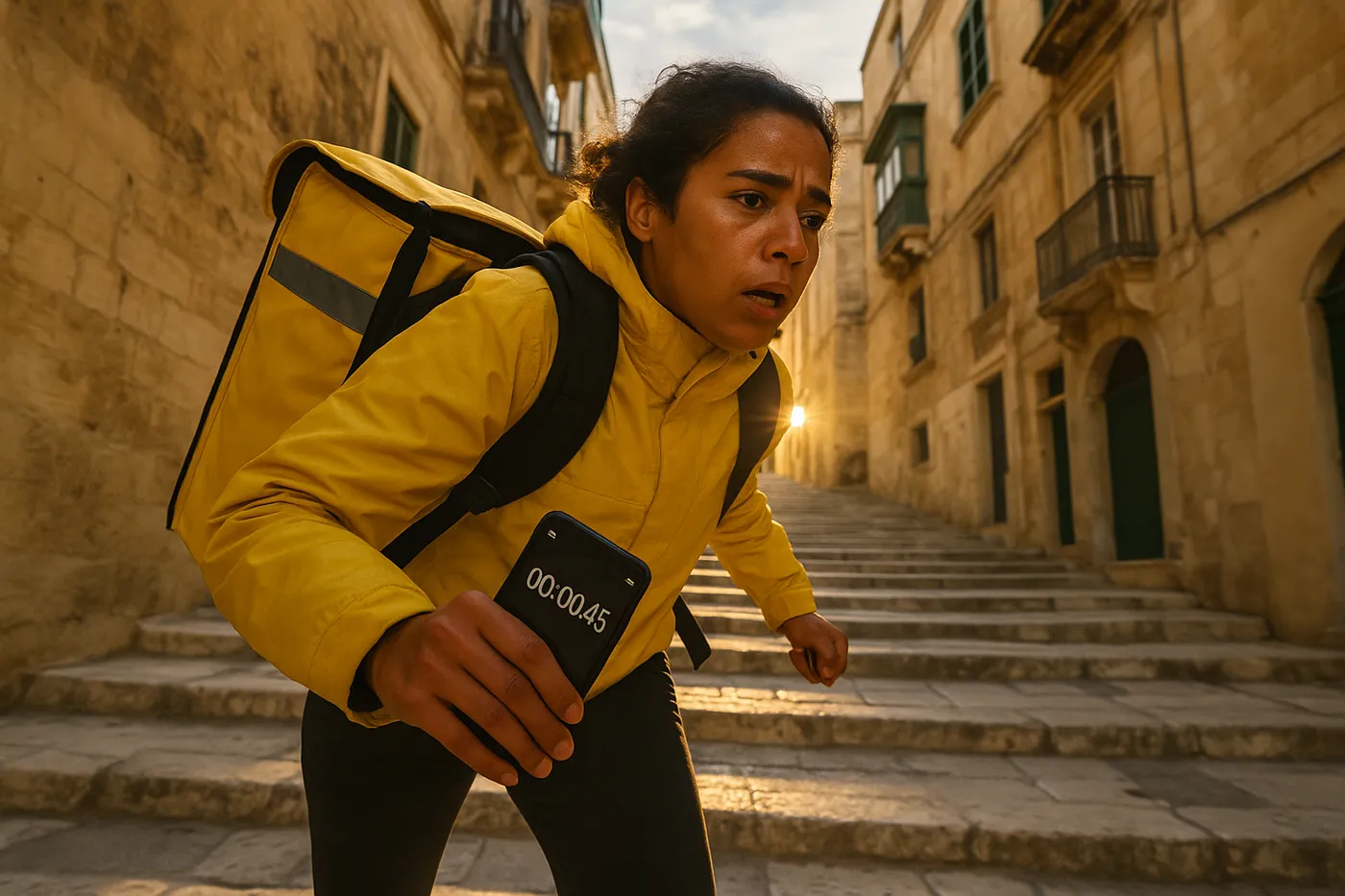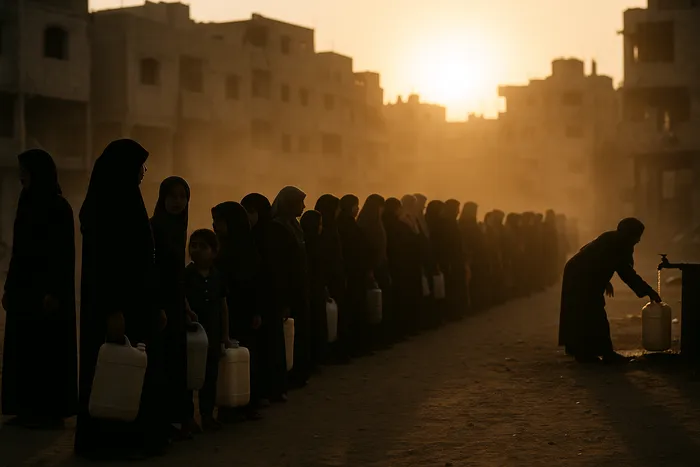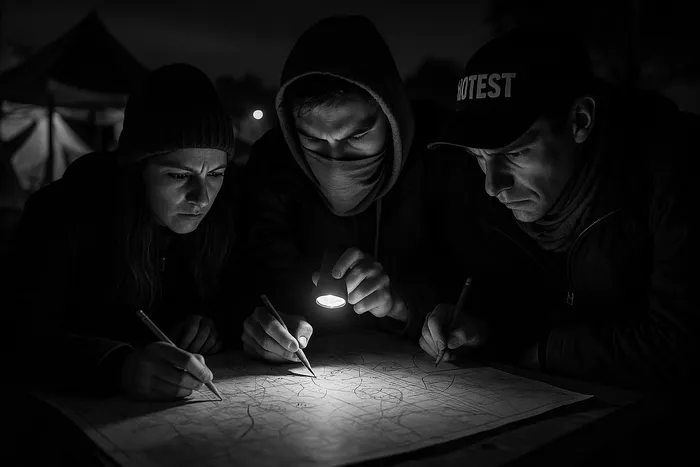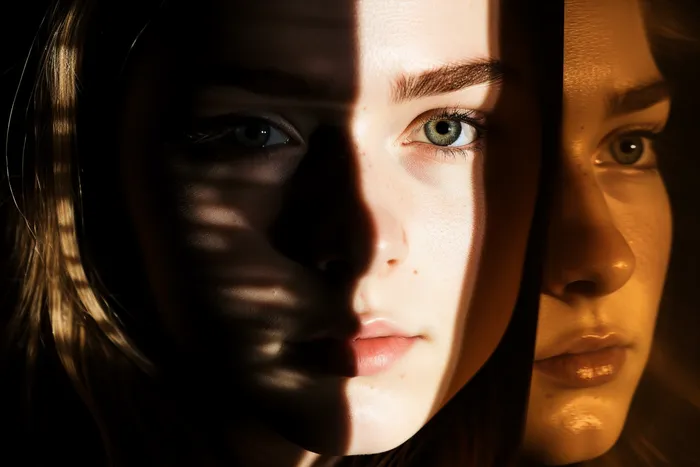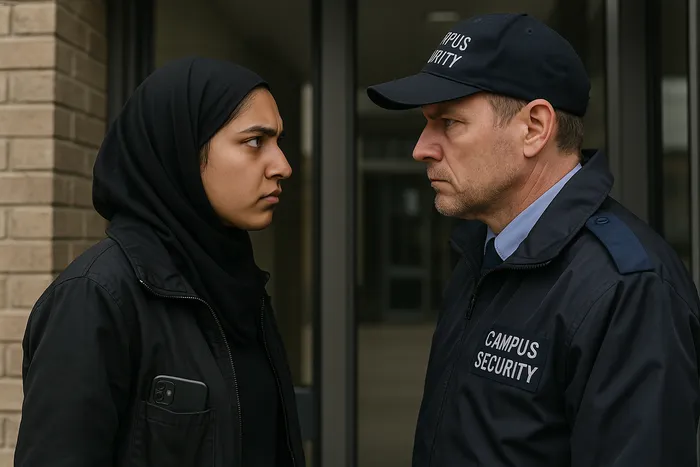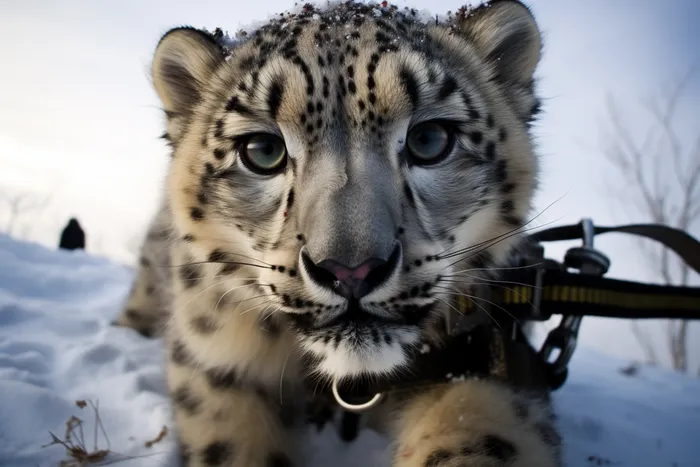Night Shift: Gaza After Dark
When the sun sets over Gaza, a different city emerges. In the darkness, away from the scrutiny of drones and surveillance systems, 1.9 million people create the parallel infrastructure that sustains life under siege. This is the Gaza that mainstream coverage rarely sees: a community of extraordinary ingenuity building systems of survival through mutual aid, underground education, and shadow economies.
Using infrared and thermal imaging technologies, this series documents the nocturnal networks that have become essential to Palestinian survival. Here, in the hours between midnight and dawn, teachers conduct classes by LED light in basements, medical volunteers sort contraband medications, families tend hidden rooftop gardens, and teenagers climb building rubble searching for internet signals to maintain connection with the outside world.
This is not the Gaza of statistics and political statements, but the Gaza of human creativity under pressure. Every night, thousands of people perform the quiet acts of resistance that keep communities alive: sharing resources, teaching children, caring for the sick, and maintaining the social bonds that transform survival into dignity.
The infrared aesthetic serves both practical and symbolic purposes. Technically, it allows documentation of activities that must remain hidden from surveillance systems. Symbolically, it reveals the heat signatures of human care—the warm bodies gathering around makeshift blackboards, the thermal patterns of healing hands in underground clinics, the bright spots of solidarity in a landscape designed to fragment and isolate.
This work challenges conventional crisis photography by focusing on agency rather than victimhood, creativity rather than destruction. Each frame documents not what has been lost, but what communities have built. The night vision technology, typically associated with military surveillance, is reclaimed here to reveal the very humanity that such systems seek to control.
The people in these images are not waiting for rescue—they are actively creating the conditions for their own survival and that of their neighbors. They have transformed the cover of darkness from a vulnerability into a strength, using night as a space for education, healing, and hope. Their work happens in the shadows not because it is shameful, but because it is powerful, and power under occupation must sometimes operate in the margins.
This series bears witness to the midnight teachers, the dawn medics, the young people who risk everything to maintain digital connection with the world beyond the walls. Their work is both ordinary and extraordinary: ordinary because caring for community should be the most natural thing in the world, extraordinary because they do it under conditions designed to make care impossible.
Photographer Bio
Amara Okonkwo's approach to documentary photography emerges from her unique background bridging engineering and journalism. Originally trained as an electrical engineer in Lagos, she witnessed firsthand how communities create alternative systems when official infrastructure fails. Her technical expertise with imaging technologies serves her humanitarian vision, using thermal and infrared photography to reveal hidden stories of community resilience.
Her breakthrough work documenting Lagos's informal electrical networks earned recognition for both technical innovation and social insight. Okonkwo's photography consistently reveals the sophisticated survival strategies that communities develop under pressure, challenging narratives that focus only on crisis and destruction.
Now working internationally, Okonkwo specializes in documenting nocturnal economies and shadow systems that sustain communities during conflict and crisis. Her work has been featured in major exhibitions on contemporary conflict photography, with critics noting her ability to combine technical innovation with deep respect for human dignity and community agency.
Image Captions
#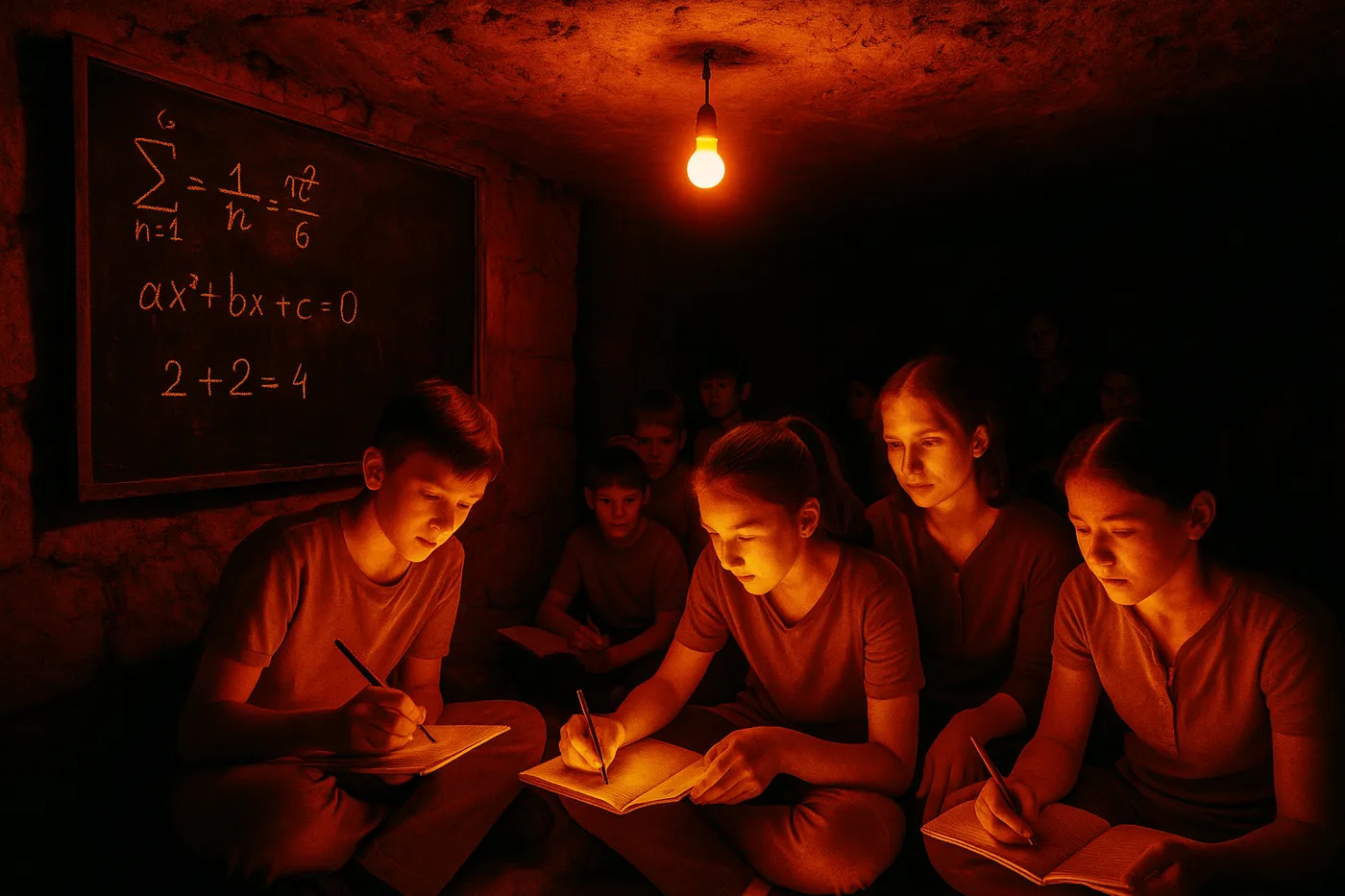
Image 1: Underground Classroom
Children studying mathematics by LED light in basement classroom, infrared imaging revealing faces illuminated in darkness
In the basement of a partially destroyed building, twelve children gather around a makeshift blackboard where their teacher writes mathematical equations by the light of a single LED bulb. The infrared imaging reveals their faces glowing with concentration as they work through problems that will prepare them for university entrance exams they may never be allowed to take. This underground school operates from midnight to dawn, when the risk of detection is lowest. The children range in age from 8 to 16, united by their determination to continue learning despite the closure of formal schools. Their notebooks are salvaged paper, their pencils shared among the group, but their dedication to education represents an act of resistance against forces that would deny them futures.
#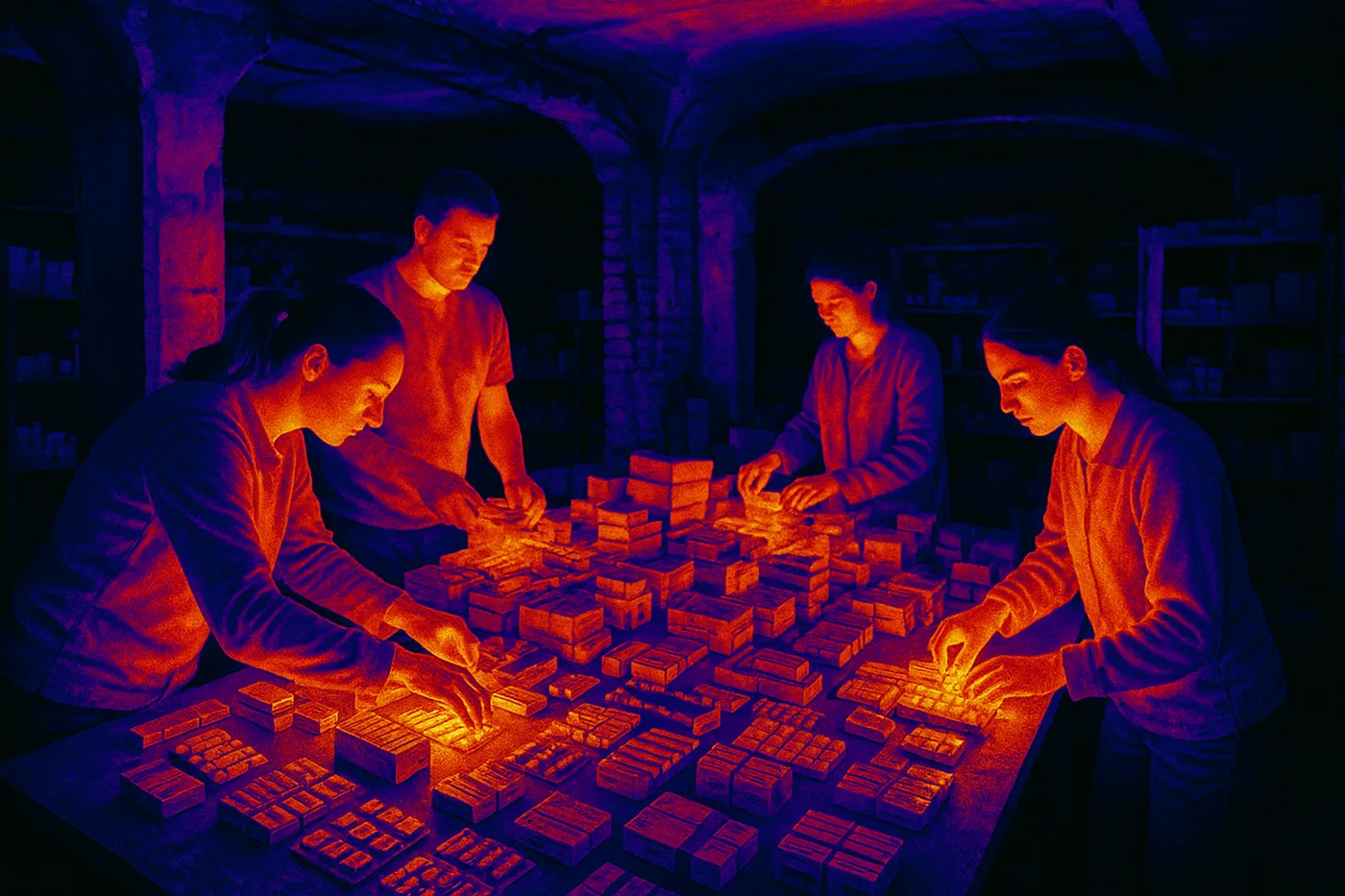
Image 2: Midnight Pharmacy
Network of volunteers sorting contraband medications in abandoned basement, thermal imaging showing heat patterns of careful work
Thermal imaging reveals the heat signatures of hands carefully sorting medications in an underground pharmacy operating without official permission. These volunteers, mostly former medical students and retired nurses, receive medications through networks that stretch across borders, organizing supplies that formal aid organizations cannot provide. Working by the heat-glow of their bodies, they prepare treatments for diabetes, heart conditions, and mental health needs that official medical systems cannot meet. The basement space, part of a destroyed clinic, has been converted into a sophisticated distribution center where volunteers work through the night to ensure medications reach families who cannot afford formal medical care.
#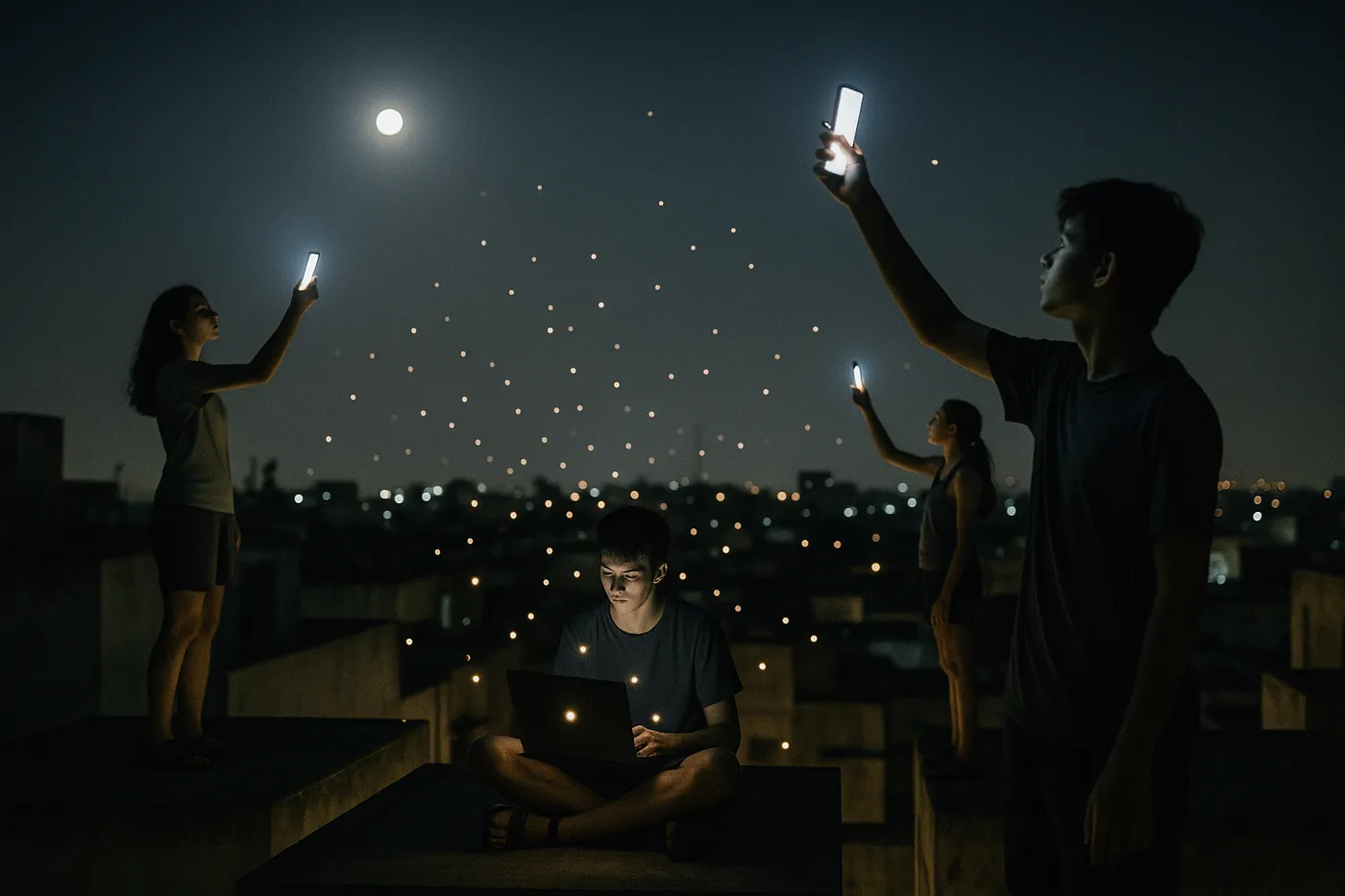
Image 3: Signal Hunters
Young people on rooftops searching for internet connectivity, devices glowing like fireflies against night sky
On rooftops across Gaza, young people hold phones and laptops toward the sky, searching for internet signals that will connect them to education, family, and the outside world. The long exposure captures their devices as points of light against the darkness, modern fireflies seeking digital connection in a landscape of enforced isolation. These nightly expeditions can last hours, with groups of teenagers sharing battery power and signal access to download educational materials, communicate with relatives abroad, and maintain the digital lifelines that formal restrictions try to sever. Their persistence transforms rooftops into libraries, classrooms, and communication centers.
#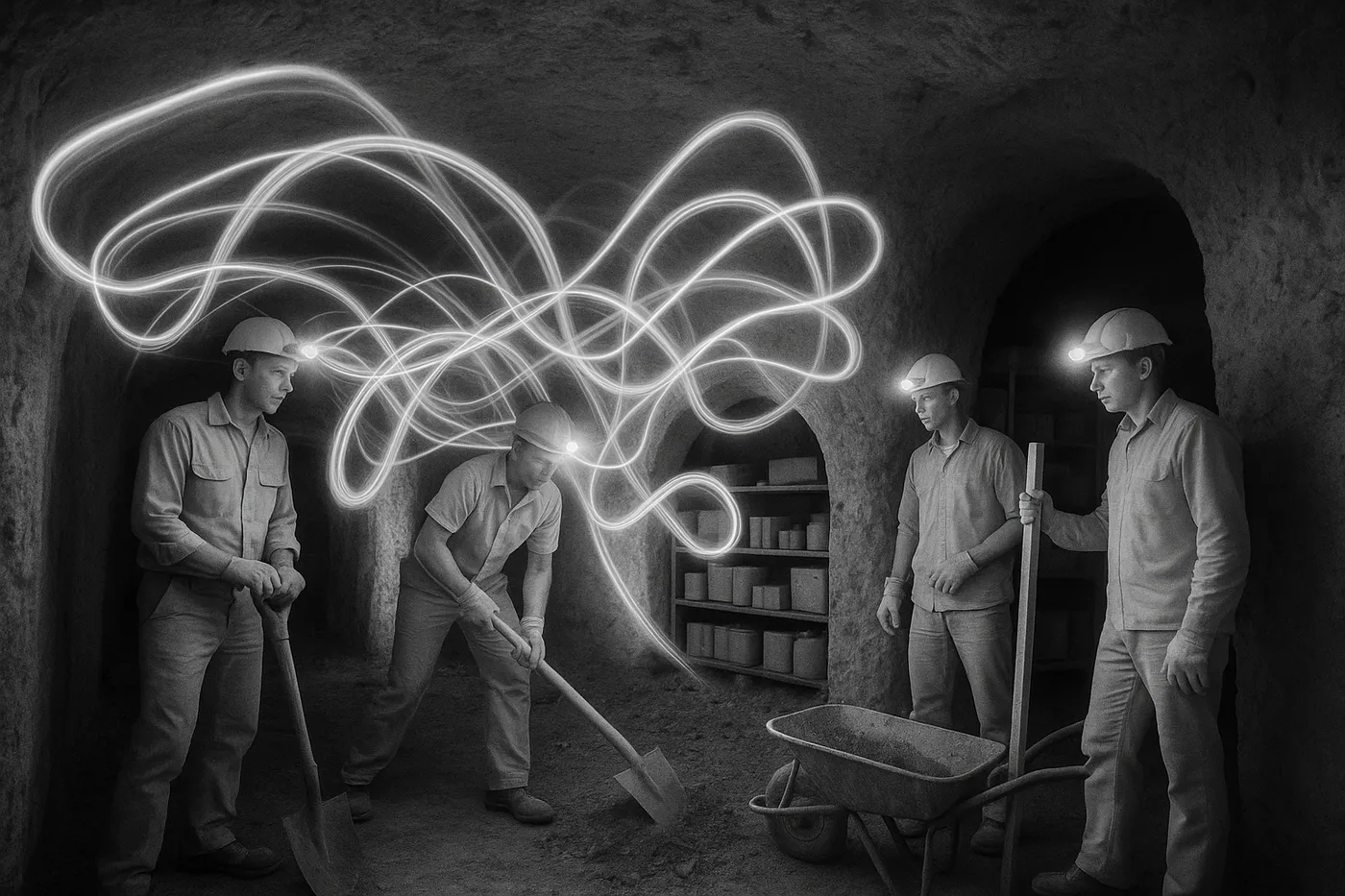
Image 4: The Tunnelers
Workers expanding underground storage spaces, headlamp trails creating light paintings in excavated darkness
Beneath Gaza, a different infrastructure expands nightly as volunteers dig and reinforce underground storage spaces for food, water, and medical supplies. The long exposure captures headlamp trails as light paintings in the excavated darkness, revealing the careful choreography of underground construction. These are not the tunnels of military resistance, but the storage spaces of community survival—carefully engineered spaces where families can secure resources against shortages and siege restrictions. The workers, many with backgrounds in construction and engineering, apply professional skills to community survival, creating hidden infrastructure that ensures neighborhood resilience.
#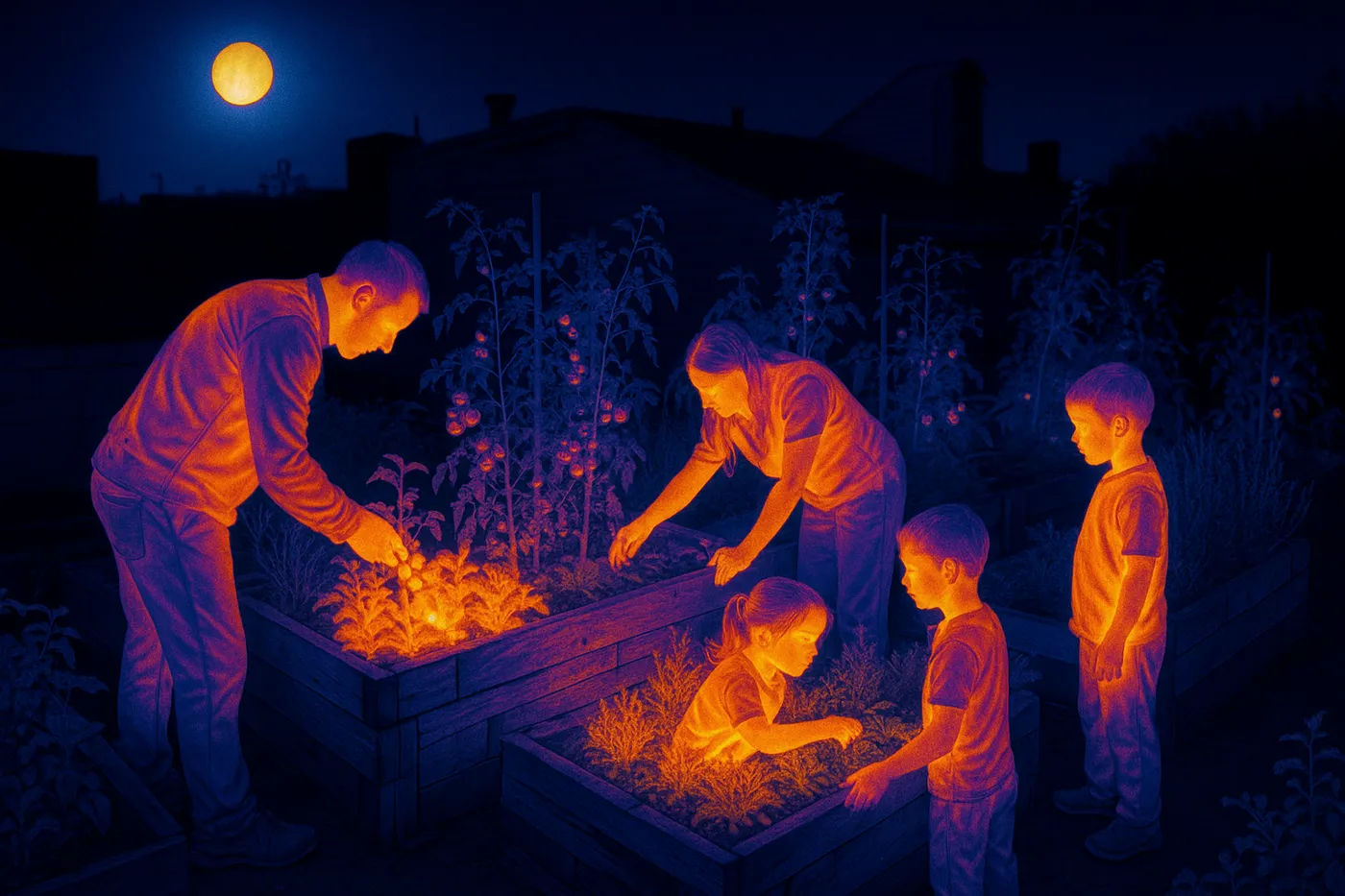
Image 5: Night Garden
Family tending hidden rooftop garden by moonlight, infrared revealing heat signatures of growing plants
Infrared photography reveals the thermal patterns of a hidden rooftop garden where a family tends vegetables by moonlight. The warm signatures of growing tomatoes, herbs, and leafy greens create bright spots in the darkness, while family members move carefully between raised beds built from salvaged materials. This nighttime agriculture operates beyond the view of surveillance systems that monitor daytime activities. The family has spent months developing soil from compost and ash, collecting rainwater in hidden containers, and protecting plants from salt air and harsh conditions. Their garden produces enough vegetables to supplement their diet and share with elderly neighbors.
#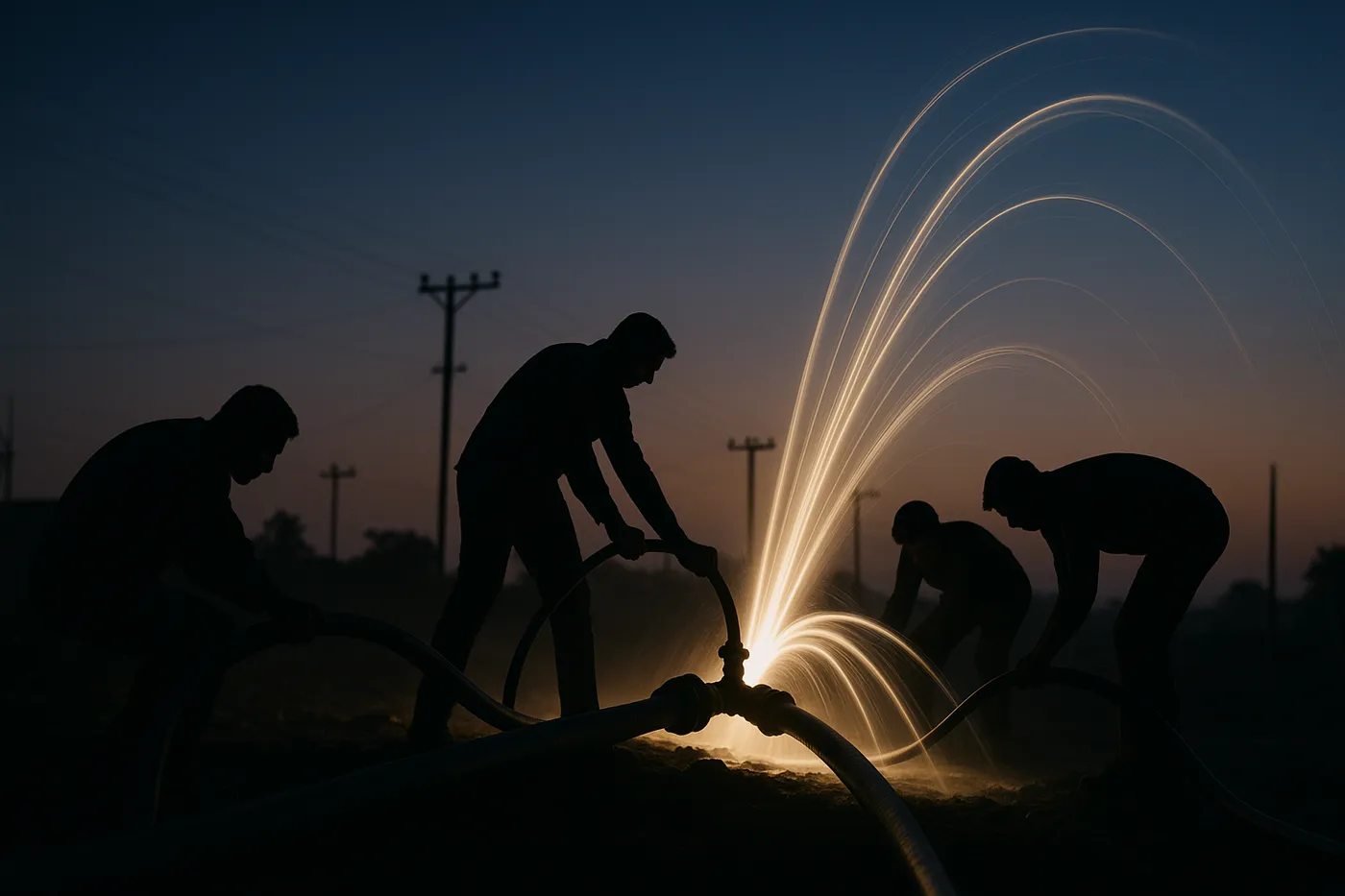
Image 6: Water Thieves
Silhouettes against predawn sky connecting illegal water taps, long exposure capturing flow patterns
Before dawn, volunteers risk arrest to connect illegal water taps that provide neighborhoods with access to clean water beyond official allocations. The long exposure captures water flow patterns as streams of light against the predawn sky, while silhouetted figures work quickly to establish connections that will serve dozens of families. This water network operates through careful timing and community coordination, with lookouts posted to warn of official patrols. The volunteers, many of them former municipal workers, understand the city's water infrastructure well enough to create alternative distribution systems that ensure more equitable access to this essential resource.
#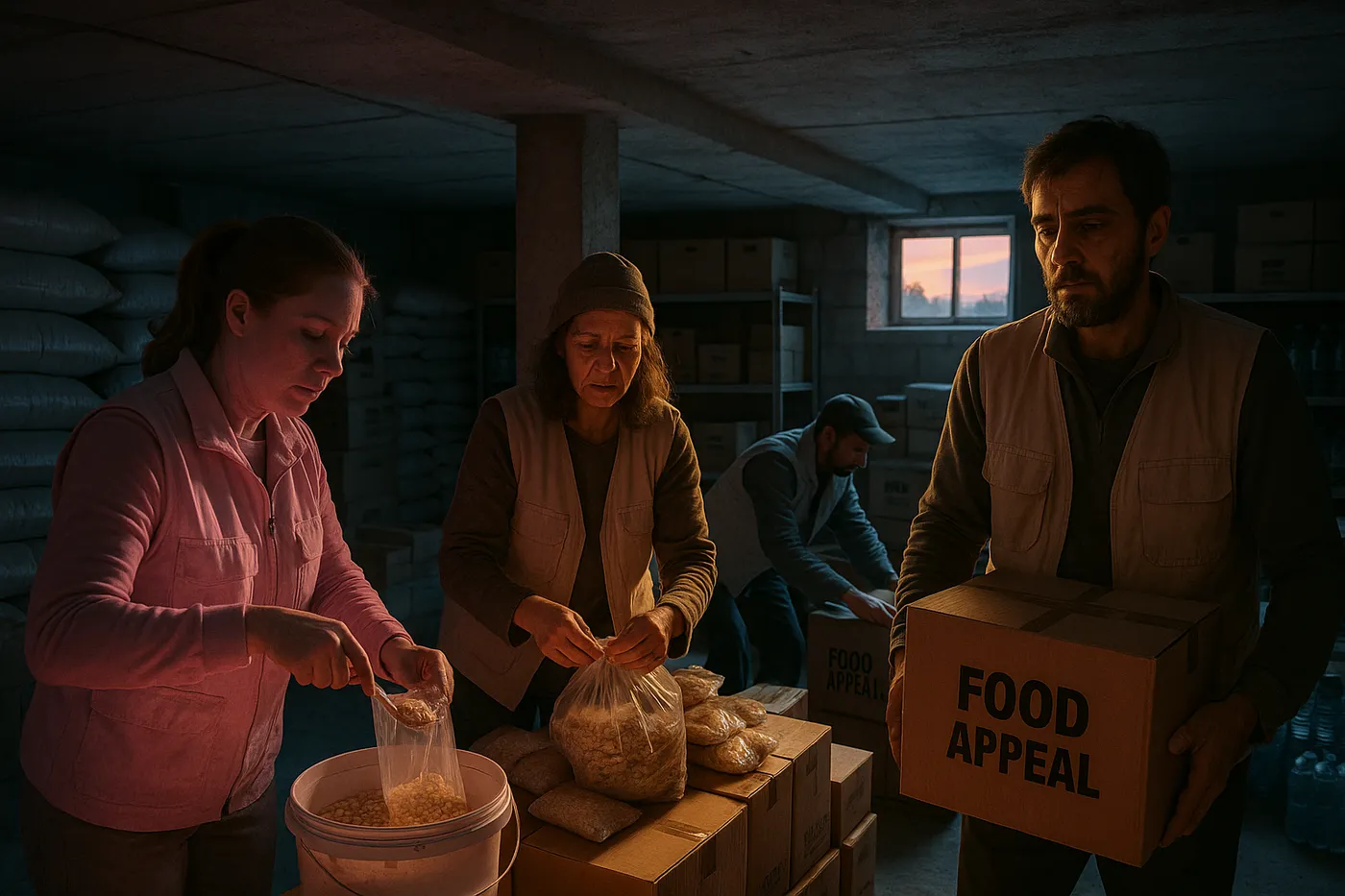
Image 7: Dawn Patrol
Aid workers preparing day's distribution as first light reveals exhausted faces after night's work
As dawn breaks, aid workers prepare for the day's food distribution after working through the night to organize supplies and plan routes that will serve the maximum number of families. The infrared imaging transitions to natural light, revealing exhausted faces marked by the intensity of night work but determined to continue serving their community. These volunteers operate an informal distribution network that supplements official aid channels, ensuring that elderly and disabled residents receive supplies when they cannot reach formal distribution points. Their work bridges the gap between large-scale humanitarian assistance and individual community needs.
Photo Prompts
#
Image 1: Underground Classroom
Children studying in underground basement classroom lit by single LED bulb, infrared photography showing faces illuminated in darkness, makeshift blackboard with mathematical equations, students ranging from children to teenagers sharing notebooks and pencils, shot on infrared-modified Canon R5 with 24mm f/2.8 lens, thermal imaging revealing concentration and dedication to learning, composition emphasizing community education and resistance through knowledge, award-winning photojournalism, World Press Photo documentary style
#
Image 2: Midnight Pharmacy
Volunteers sorting medications in underground pharmacy basement using thermal imaging, heat signatures of hands carefully organizing medical supplies, former medical students and nurses working by body heat glow, destroyed clinic converted to distribution center, shot using thermal imaging camera with 35mm equivalent lens, composition showing community medical care and mutual aid networks, documentary style emphasizing healthcare resilience, World Press Photo winning humanitarian photography
#
Image 3: Signal Hunters
Young people on Gaza rooftops at night searching for internet connectivity, phones and laptops glowing like fireflies against dark sky, teenagers holding devices toward sky seeking digital signals, long exposure capturing device lights as points of light, shot on Canon R5 with 50mm f/1.4 lens at high ISO, natural moonlight and device screens providing illumination, composition showing digital resistance and connection seeking, award-winning photojournalism, World Press Photo documentary style
#
Image 4: The Tunnelers
Workers underground expanding storage spaces with headlamps creating light trails, long exposure capturing movement patterns in excavated darkness, volunteers with construction backgrounds building community infrastructure, underground spaces for food and medical storage, shot on infrared-modified camera with 24mm wide lens, headlamp trails creating light paintings effect, composition emphasizing hidden infrastructure and community engineering, World Press Photo style underground documentation
#
Image 5: Night Garden
Family tending rooftop garden by moonlight using infrared photography, thermal imaging revealing heat signatures of growing vegetables and family members, hidden agriculture with tomatoes and herbs in raised beds, salvaged materials creating growing spaces, shot using thermal imaging with 35mm lens, natural moonlight and plant heat creating composition, documentary style showing agricultural resistance and food security, award-winning environmental photojournalism
#
Image 6: Water Thieves
Silhouettes working on illegal water connections before dawn, long exposure capturing water flow patterns as light streams, volunteers establishing alternative water distribution network, predawn sky providing backdrop, shot on Canon R5 with 85mm f/2.8 lens using long exposure technique, water flow creating light trails against sky, composition showing infrastructure resistance and community resource sharing, World Press Photo documentary photography
#
Image 7: Dawn Patrol
Aid workers preparing food distribution as dawn breaks, transition from infrared to natural lighting revealing exhausted faces after night work, volunteers organizing supplies for community distribution, basement storage space with organized aid supplies, shot on Canon R5 with 35mm f/2.8 lens in mixed infrared and natural light, composition showing dedication and community service across night into day, award-winning humanitarian photojournalism, World Press Photo style
Photographer Portrait Prompt
Professional portrait of Nigerian woman photographer in her mid-thirties, short natural hair, intelligent and determined expression, wearing practical field clothing with technical photography equipment visible, infrared cameras and specialized lenses in background, shot in natural light emphasizing technical expertise and humanitarian focus, professional documentary photographer aesthetic, award-winning portrait photography

